|
|
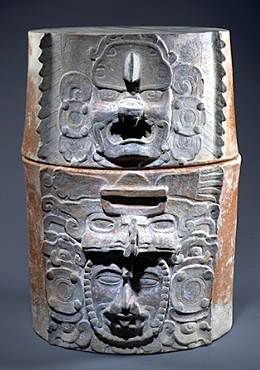
|
A king's adornments linked him to his community's history, to his deified ancestors, and to the gods themselves. The lid on this cache urn portrays an early and unusual frontal version of K'awiil on its upper section. This deity is characterized by the smoking flint knife or torch that protrudes from a mirror on his forehead. K'awiil was associated with lightning.
Cache Urn Depicting Supernatural Beings |
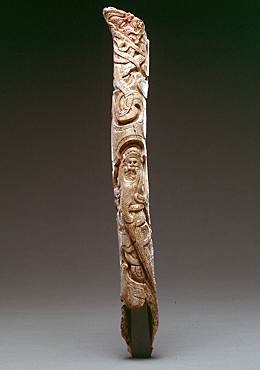
|
This carved femur, one of a pair, was found in a tomb. Long bones such as these appear in funerary contexts as relics of venerated ancestors and may have been used in commemorative ceremonies. The bones were carved with elaborate designs referring to cycles in the life of the Maize God, whose profile head appears on both bones.
Two Carved Femurs |
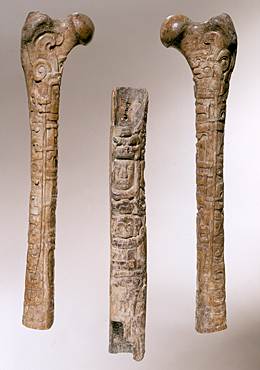
|
The two jaguar femurs on left and right here are carved in a manner resembling the stacked supernaturals seen on cache vessels (such as #1 in this selection). One depicts the beaded face of a king, whose headdress comprises the Principal Bird Deity surmounted by a jaguar, both wearing the diadem of Itzamnaaj. The youthful face of the Maize God appears at the top.
Three Carved Bones. |
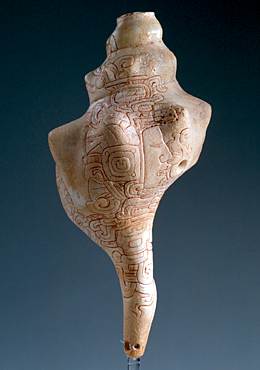
|
Throughout Mesoamerican history, conch shells were modified and used as trumpets. On this shell trumpet, the face of a king is shown wearing a large quincunx-patterned earflare with personified knots. His headdress incorporates a water lily jaguar sign, which also occurs as his name in the brief text adjacent to the profile head.
Shell Trumpet |
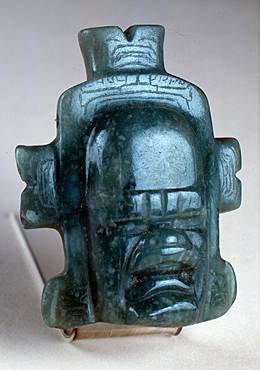
|
This pendant with its distinctive Olmec-style face came into the possession of a Late Classic period Maya king, who was subsequently buried with this royal jewel. As an heirloom, the pendant underscored the importance of ancestors, a primary source off authority for the ruler.
Olmec-Style Pendant. |
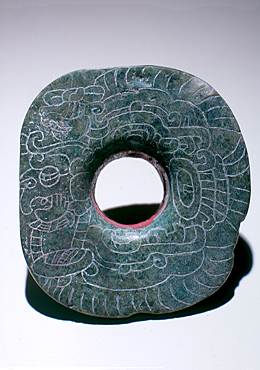
|
Earflares like this one were worn with a protruding central cylinder and counterweights dangling down the back. They were intergral components of royal costume. This one is incised with an image of the Principal Bird Deity wearing its characteristic necklace; the wings and tail cover the surface of the flare. Above the bird is another avian head resembling the hieroglyphic verb for accession to office, affirming the importance of the PBD to early Maya kingship.
Earflare Depicting Principal Bird Deity |
top home |
Copyright 2005 Los Angeles County Museum of Art